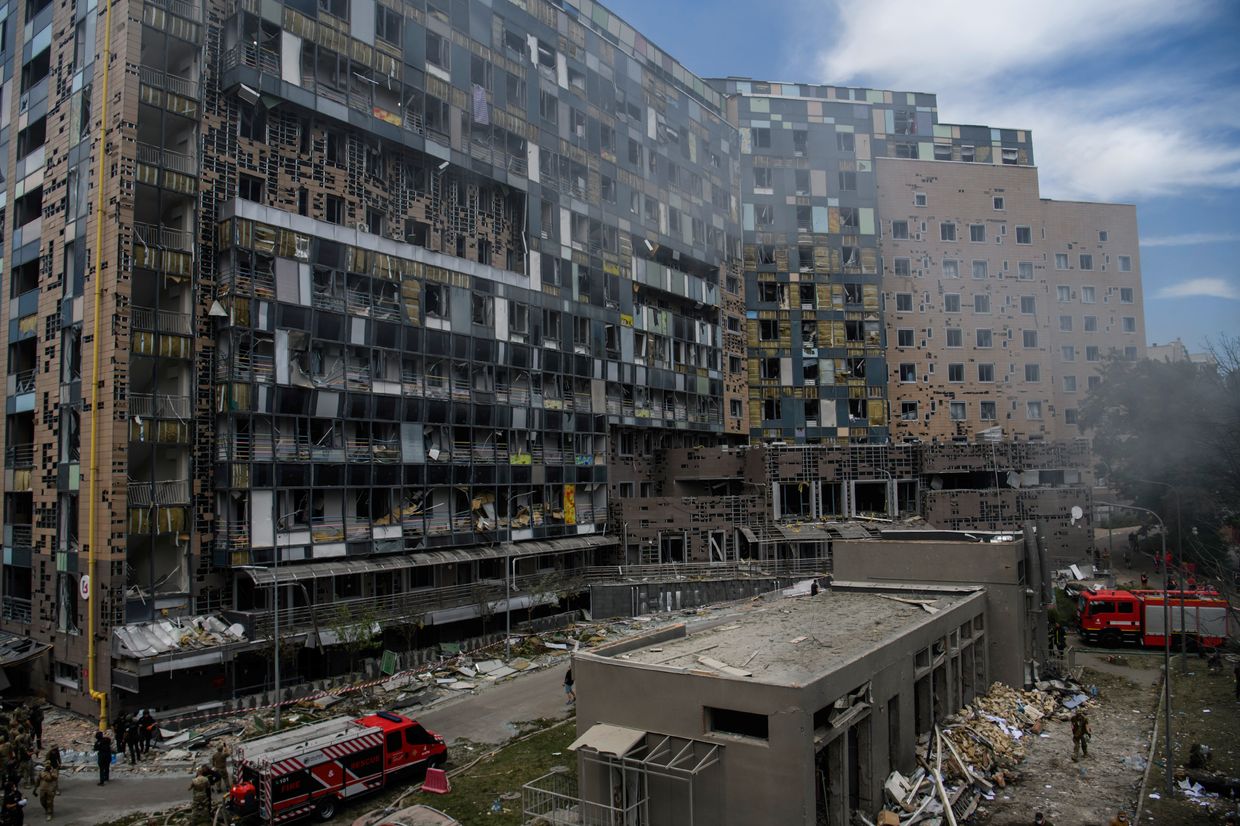
Opinion: How corrupt is public procurement in Ukraine?
Ukrainian soldiers reload ammunition during assault training in Donetsk Oblast, Ukraine, on May 13, 2024, amid Russia's war against Ukraine. (Diego Herrera Carcedo/Anadolu via Getty Images)

Andrii Borovyk
Director of Transparency International Ukraine
A quick Google search on procurement in Ukraine renders pages upon pages of corruption-related headlines. “National Anti-Corruption busts Defense Ministry food procurement scheme;” “Kyiv accuses military brass of procurement graft;” “Ukraine opens arms procurement corruption investigation.”
Ukraine introduced Prozorro, an electronic procurement system implemented in 2016, as part of broader reforms to increase transparency and combat corruption. Just a few months ago, for example, the Ukrainian government transitioned the process of defense procurement to Prozorro to ensure stable supply, transparent pricing, and increased security.
But to what extent has the Prozorro system addressed concerns over the transparency of Ukraine’s public procurement processes?
Ukraine conducted over 3.6 million procurements totaling Hr 922.7 billion ($22.6 billion) last year. Competitive methods, accounting for approximately 68% of this sum ($15.6 billion), enabled better pricing through competition among companies vying for contracts with the state.
The State Audit Service, Ukraine’s main procurement control body, monitored 12,191 tenders worth Hr 188 billion ($4.6 billion) last year. Violations were found in 8,000 cases amounting to Hr 92 billion ($2.3 billion) – 0.2% of procurements by quantity and 10% by value. This figure does not necessarily equate to theft but represents the cost of procurements with violations, some of which may not significantly affect competition or savings and are merely formalities. Auditors claim to have saved Hr 19.8 billion ($485 million) for the budget in 2023 through contract terminations and procurement cancellations, approximately 2.1%.
Despite suggestions for improving the State Audit Service's efficiency, its data remains the primary source regarding procurement violations. This information indicates that the situation may not be as dire as portrayed in the media.
In procurement, savings are calculated as the difference between the expected cost and the amount spent on a tender. In 2023, savings from competitive procurement amounted to Hr 64.4 billion ($1.6 billion) (over 10%), demonstrating Prozorro’s effectiveness.
The Ukrainian electronic procurement system is praised internationally. In 2021, it was highlighted in the U.S. Strategy on Countering Corruption, and the European Bank for Reconstruction and Development (EBRD) recommended it for procurement reform. Prozorro was recognized as the most transparent public procurement system in 2020 and has received eight international awards.
During COVID-19, Ukraine quickly adapted its procurement methods to ensure transparency and efficiency, setting an example of openness and efficiency in combating the pandemic. Similarly, after the full-scale invasion, procurement adapted quickly, demonstrating unprecedented flexibility and stability.

Special open bidding, the primary procurement method during martial law, combines pre-war open biddings with faster-simplified tenders for amounts from Hr 50,000 ($1,200) up to national thresholds. This approach allows for quicker procurement, even with only one bidder, while providing 24 hours for error correction, appeals to AMCU, and auditor monitoring. This combination ensures fast and efficient wartime procurement.
However, the public procurement system's flexibility extends beyond this new procedure. The rules are continuously improved, sometimes too frequently, with more than 20 amendments to the resolution regulating procurement under martial law.
Recent changes include extending deadlines for submitting proposals for construction tenders, based on research by our DOZORRO team, which showed that longer terms ensure higher competition. The Economy Ministry adopted this proposal to enhance procurement efficiency.
An interesting innovation for 2024 is the construction procedure on Prozorro, developed for procurement with donor funds. Different international organizations have their own procurement approaches, which may not align with Ukrainian methods. Prozorro has developed a flexible procedure to meet donors' requirements. The World Bank has recognized Prozorro's compliance with its rules, recommending the system for all its projects in Ukraine. Conducting all tenders through Prozorro enhances transparency and accessibility for businesses, making it easier to track tenders and compete for contracts.
We also see positive results from centralized procurement, particularly in defense procurement. The State Rear Operator (SRO), created in late 2023 to optimize non-weapon procurement for the military, achieved a 15% savings in the first quarter of 2024 compared to previous years' prices. This amounts to over Hr 1 billion ($24.5 million), which can be redirected to other military needs. A reform of food procurement for the Armed Forces has also been launched, though results are pending due to opposition from the old system.
Over the past two years, e-catalog tenders have significantly developed, becoming mandatory for some goods categories like food and medicine. We are already seeing results, such as terminating several food contracts due to overpayment questions and finding better prices through Prozorro Market. Our regional journalist from Kremenchuk also noted savings in food procurements for local educational institutions through the e-catalog. Despite progress, some issues with Prozorro Market's functionality remain, indicating room for improvement.
While transparency concerns persist, Prozorro's track record suggests significant improvements in procurement efficiency and savings. The system has proven to be open and maximally flexible, capable of adapting to today's challenges. However, the key challenge remains reforming the institutions responsible for controlling public procurement. We need to continue improving what we have now: electronic contracts, appeals, centralized procurement organizations, etc. For example, technical documentation in non-machine-readable formats likely limits competition in construction tenders.
The electronic system does not eliminate corruption but significantly reduces it and makes it more visible.
To appreciate Prozorro's impact, consider the past: 10 years ago, procurement was paper-based, lacking transparency and efficiency. We could not analyze tenders, see violations, or access documents and data to understand legislative needs. Calculating savings and overpayments was impossible.
With the war's duration uncertain and international support potentially finite, improving Prozorro and maximizing procurements through it is crucial. This will optimize state expenses and redirect savings to defense and restoration efforts. Public procurement should be a source of pride. To achieve this, we must stop focusing solely on shortcomings and actively eliminate them while developing advantages.
Editor’s Note: The opinions expressed in the op-ed section are those of the authors and do not purport to reflect the views of the Kyiv Independent.












